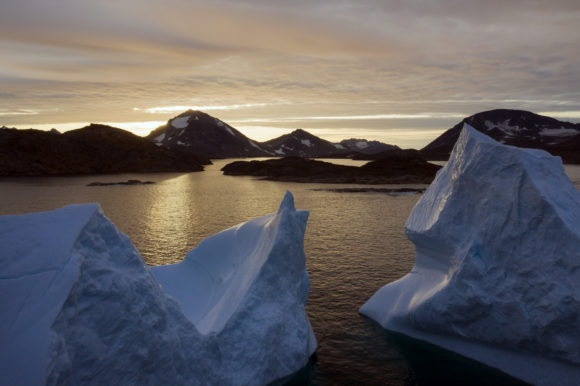BRUSSELS/LONDON — Last year tied with 2016 as the world’s warmest on record, rounding off the hottest decade globally as the impacts of climate change intensified, the European Union’s Earth observation service said on Friday.
After an exceptionally warm autumn and winter in Europe, the continent experienced its hottest year on record in 2020, while the Arctic suffered extreme heat and atmospheric concentrations of planet-warming carbon dioxide continued to rise.
Scientists say the rising temperatures contributed to more intense natural disasters, from wildfires in Australia and the United States to cyclones in South Asia, heatwaves in Europe and locust swarms in east Africa.
With governments due to meet for a climate summit in Glasgow in November, the latest data prompted renewed calls for faster action to slash greenhouse gas emissions in line with the 2015 Paris Agreement to avoid catastrophic climate change.
“The key here is to – for every year and as quickly as possible – reduce the amount we emit, thus reducing the amount we actually add into the atmosphere,” said Freja Vamborg, senior scientist at the Copernicus Climate Change Service.
In 2020, temperatures globally were an average of 1.25 degrees Celsius (2.7 degrees Fahrenheit) higher than in pre-industrial times, Copernicus said.
The Paris accord aims to cap the rise in temperatures to “well below” 2C and as close as possible to 1.5C to avoid the most devastating impacts of climate change.
The Arctic and northern Siberia continued to warm more quickly than the planet as a whole in 2020, with temperatures in parts of these regions averaging more than 6C above a 30-year average used as a baseline, Copernicus said.
The region also had an “unusually active” wildfire season, with fires poleward of the Arctic Circle releasing a record 244 million tonnes of CO2 in 2020, over a third more than in 2019.
Arctic sea ice continued to deplete, with July and October setting records for the lowest sea ice extent in that month.
In August, instruments documented the highest temperature ever reliably recorded, when a California heatwave pushed the temperature at Death Valley in the Mojave Desert up to 54.4C (129.92°F).
“Grim Milestone”
Although COVID-19 lockdowns meant global emissions of CO2 dipped in 2020 compared with recent years, the concentration of the gas accumulated in the atmosphere continued to rise, Copernicus said.
Britain’s Met Office forecast on Friday that CO2 concentrations would hit levels 50% higher than before the industrial revolution in spring 2021.
“This is another grim milestone in the unrelenting rise of atmospheric CO2 concentration,” said Heather Graven, a climate scientist at Imperial College in London.
Scientists said the latest data were consistent with growing evidence that climate change is likely to result in more intense hurricanes, fires, floods and other disasters.
Damages from natural disasters globally rose to $210 billion in 2020 from $166 billion the previous year, with the United States hit hard by hurricanes and wildfires, German reinsurer Munich Re said in a report published on Thursday.
The impacts were particularly punishing in developing countries, where the majority of losses from weather-related disasters are not covered by insurance, said Ernst Rauch, chief climate scientist at Munich Re.
“The consequence is that economic development, with all these economic shocks, is set back, is pushed back for years,” Rauch said.
In the United States, Adam Smith, a climate scientist with the National Oceanic and Atmospheric Administration (NOAA) said an annual tally of the costs of U.S. disasters causing at least a billion dollars worth of damage would be announced at 1600 GMT (1100 a.m. EST) on Friday.
Published data shows the United States suffered 16 billion-dollar disasters in the first nine months of 2020, matching records set in 2011 and 2017. A preliminary analysis found 13 of last year’s disasters led to at least 188 deaths and costs of $46.6 billion, Smith said.
“I think it’s fair to say that 2020 – even in the first nine months – was another historic year,” Smith said. “We need another dictionary to help us describe how these extremes continue to play out and unfold year after year.”
About the photo: This early Friday, Aug. 16, 2019 file photo shows an aerial view of large Icebergs floating as the sun rises near Kulusuk, Greenland. Greenland has been melting faster in the last decade, and this summer, it has seen two of the biggest melts on record since 2012. (AP Photo/Felipe Dana)
Was this article valuable?
Here are more articles you may enjoy.


 How Three New CMS Policies Impact Workers’ Comp Claims
How Three New CMS Policies Impact Workers’ Comp Claims  California Again Delays Wildfire Protection Rules for Homes
California Again Delays Wildfire Protection Rules for Homes  NYT, Chicago Tribune Sue Perplexity AI as Copyright War Rages On
NYT, Chicago Tribune Sue Perplexity AI as Copyright War Rages On  State Farm Sued Over Policies Backed by Distressed Insurer PHL
State Farm Sued Over Policies Backed by Distressed Insurer PHL 